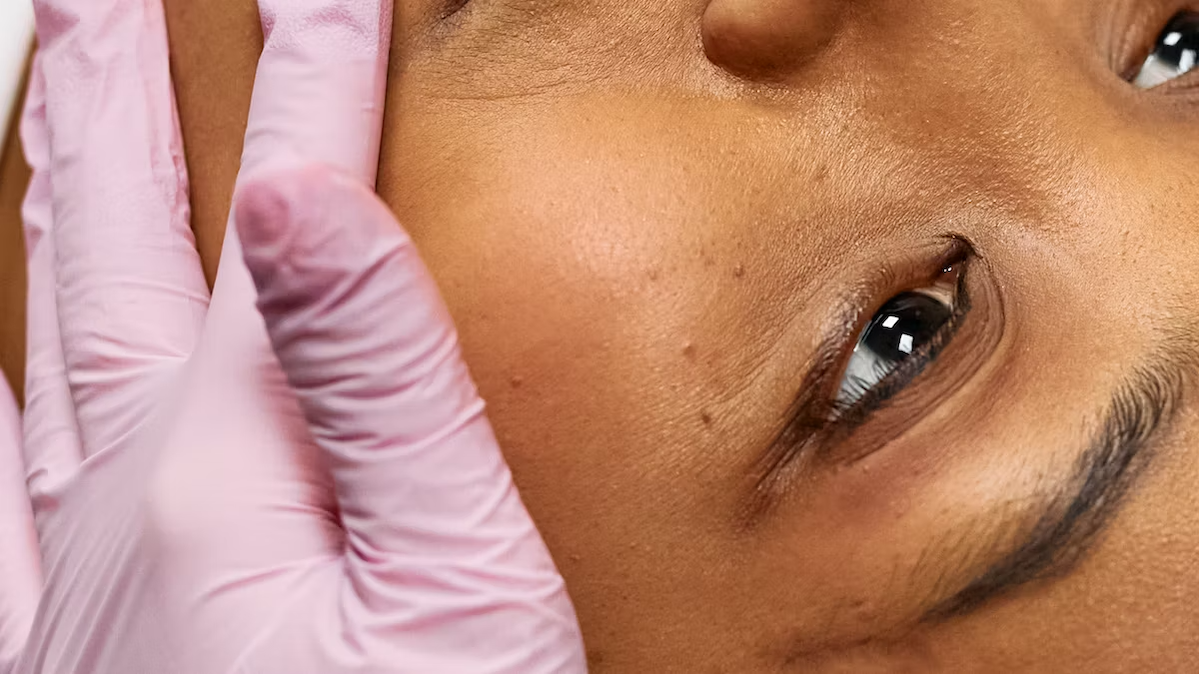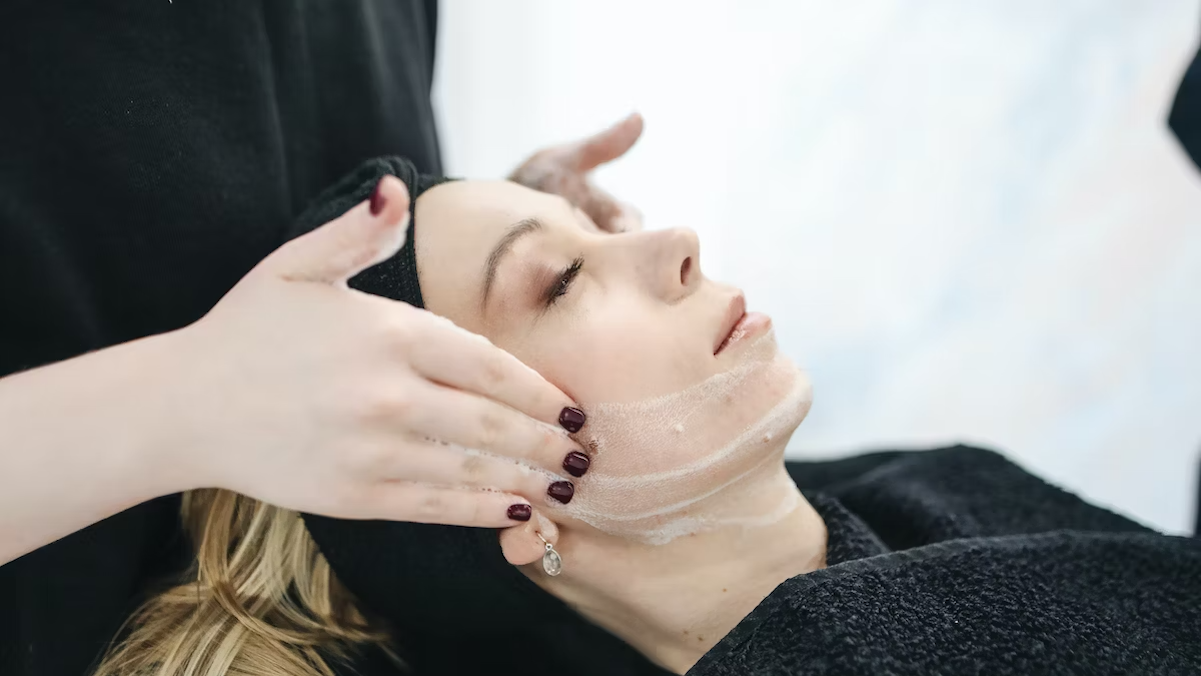
Microneedling Procedure Explained: Risks, Side Effects, and Recovery

Understanding Microneedling
Microneedling, also known as collagen induction therapy or dermarolling, is a popular cosmetic procedure that has gained significant attention in recent years. It involves using tiny needles to create controlled micro-injuries on the skin's surface. These micro-injuries stimulate the body's natural healing response, leading to increased collagen and elastin production, which ultimately improves skin texture and appearance.
The microneedling process begins with the use of a specialized device that contains multiple fine needles. This device can be rolled or stamped over the skin, depending on the specific technique used by the skincare professional. As the needles penetrate the skin, they create small punctures without causing significant damage. These punctures trigger a cascade of events within the skin, stimulating collagen synthesis and remodeling.
One of the key benefits of microneedling is its ability to promote collagen production. Collagen is a protein that provides structure and elasticity to the skin. As we age, our natural collagen production decreases, leading to sagging skin, wrinkles, and other signs of aging. By inducing controlled micro-injuries, microneedling encourages the body to produce new collagen fibers, resulting in firmer and more youthful-looking skin.
In addition to stimulating collagen production, microneedling also helps improve overall skin texture. The procedure can minimize the appearance of fine lines, wrinkles, acne scars, hyperpigmentation, and other common skin concerns. By promoting cell turnover and enhancing cellular communication within the skin layers, microneedling encourages the growth of new healthy cells while breaking down scar tissue.
While microneedling offers numerous benefits for improving skin health and appearance, it's essential to understand that there are potential risks involved as well. Like any medical procedure or treatment modality, there is always a possibility of adverse effects or complications.
Explaining the Microneedling Procedure
What is Microneedling?
Microneedling is a minimally invasive cosmetic procedure that involves using tiny needles to create controlled micro-injuries on the skin's surface. These micro-injuries, also known as punctures or channels, stimulate the body's natural healing response and trigger collagen and elastin production. Collagen and elastin are essential proteins that contribute to the skin's strength, elasticity, and overall texture.
The Process of Microneedling
During a microneedling procedure, a skincare professional will use a specialized device called a dermaroller or dermapen. This device consists of multiple fine needles that can be rolled or stamped over the skin. The choice between rolling or stamping technique depends on the specific needs of the patient and the preferences of the practitioner.
When performing microneedling, the skincare professional will first cleanse and prepare the treatment area. They may apply a topical numbing cream to minimize any discomfort during the procedure. Once the skin is prepped, they will gently roll or stamp the microneedling device over the targeted area.
As the microneedles penetrate into the skin, they create small punctures without causing significant damage. These punctures serve two primary purposes: they stimulate collagen and elastin production while also creating micro-channels in the skin.
The body recognizes these micro-injuries as wounds and initiates its natural healing process. It sends growth factors and other healing agents to repair and regenerate damaged tissue. As part of this response, fibroblasts (cells responsible for producing collagen) migrate to the treated area and begin synthesizing new collagen fibers.
Over time, this increased collagen production leads to improved skin texture, reduced appearance of scars or wrinkles, and an overall rejuvenated complexion. Additionally, microneedling helps enhance product absorption by creating temporary channels in the skin that allow topical treatments, such as serums or creams, to penetrate more effectively.
Benefits of Microneedling for Skin
Improved Skin Texture
One of the significant benefits of microneedling is its ability to improve skin texture. The procedure can help minimize the appearance of fine lines, wrinkles, and acne scars, giving the skin a smoother and more youthful look. By creating controlled micro-injuries, microneedling stimulates collagen and elastin production, which are essential proteins responsible for maintaining the skin's structure and elasticity.
As new collagen fibers form during the healing process, they help fill in fine lines and wrinkles, resulting in a plumper and more even complexion. Additionally, microneedling promotes the growth of new skin cells through increased cell turnover. This renewal process helps fade acne scars and other types of hyperpigmentation, leading to improved overall skin texture.
Enhanced Product Absorption
Another advantage of microneedling is its ability to enhance product absorption into the skin. The micro-channels created during the procedure allow skincare products to penetrate deeper into the epidermis, maximizing their effectiveness. This means that serums, creams, and other topical treatments applied after microneedling can deliver their active ingredients more efficiently.
The increased absorption of skincare products allows for better hydration and nourishment of the skin. It can also improve the efficacy of treatments targeting specific concerns such as hyperpigmentation or aging signs. By combining microneedling with targeted skincare products, individuals can achieve enhanced results in addressing their unique skin issues.
It's important to note that while microneedling offers these benefits for many individuals, results may vary depending on factors such as age, overall health, and individual response to treatment. Consulting with a qualified skincare professional is crucial to determine if microneedling is suitable for your specific needs and goals.
Potential Risks and Side Effects
Redness and Swelling
After undergoing a microneedling procedure, it is common to experience temporary redness and swelling in the treated area. The micro-injuries created during the process can cause mild inflammation, leading to these effects. However, it's important to note that the severity and duration of redness and swelling can vary from person to person.
Typically, the redness and swelling subside within a few hours to a couple of days following the treatment. Applying a cold compress or ice pack to the treated area can help reduce these side effects. It's also advisable to avoid hot showers, saunas, or any activities that may increase blood flow to the face immediately after microneedling.
Skin Sensitivity
Some individuals may experience increased skin sensitivity after microneedling. This heightened sensitivity is due to the temporary disruption of the skin barrier caused by the micro-injuries. It's essential to protect your skin from excessive sun exposure during this time as it can further irritate and damage sensitized skin.
Using gentle skincare products specifically formulated for sensitive skin can help soothe and hydrate your skin post-microneedling. Look for products that are fragrance-free, hypoallergenic, and non-irritating. Additionally, applying a broad-spectrum sunscreen with at least SPF 30 is crucial to shield your skin from harmful UV rays.
While redness, swelling, and increased sensitivity are common side effects of microneedling, they are usually temporary and resolve on their own with proper care. However, it's essential to consult with a qualified skincare professional before undergoing microneedling to ensure you are an appropriate candidate for the procedure.
Minimizing Downtime and Promoting Recovery
Managing Redness and Swelling
To minimize redness and swelling after microneedling, there are several steps you can take. Applying a cold compress or ice pack to the treated area can help reduce inflammation and soothe the skin. Be sure to wrap the ice pack in a clean cloth to protect your skin from direct contact.
It's also important to avoid activities that may increase blood flow to the face for the first 24-48 hours post-treatment. This includes hot showers, saunas, and strenuous exercise. These activities can exacerbate redness and swelling, prolonging the recovery process.
Additionally, it's crucial to follow any specific post-treatment instructions provided by your skincare professional. They may recommend using gentle skincare products that are free of fragrances and harsh ingredients. These products can help soothe and hydrate your skin while minimizing irritation.
Coping with Skin Sensitivity
After microneedling, your skin may be more sensitive than usual. To cope with this sensitivity, opt for gentle skincare products that won't further irritate your skin. Look for fragrance-free formulas that are specifically designed for sensitive skin.
Hydration is key during the recovery process, so be sure to moisturize regularly with a gentle moisturizer suitable for your skin type. Additionally, applying a broad-spectrum sunscreen with at least SPF 30 is essential to protect your skin from UV damage while it is still healing.
Remember to consult with your skincare professional about any concerns or questions you have regarding the recovery process. They can provide personalized recommendations based on your specific needs and guide you through each step of promoting healing after microneedling.
Tips for a Smooth Recovery Process
Follow Post-Treatment Instructions
One of the most important tips for a smooth recovery after microneedling is to follow the specific post-treatment instructions provided by your skincare professional. These instructions are tailored to your individual needs and can help optimize the healing process.
It's crucial to avoid picking at scabs or peeling skin during the healing process. Let your skin naturally shed any dead or damaged cells. Picking at scabs can increase the risk of infection and may result in scarring. Additionally, avoid using harsh exfoliants or abrasive skincare products that can irritate your healing skin.
Stay Hydrated and Maintain a Healthy Lifestyle
Proper hydration is essential for promoting healing and maintaining healthy skin. Drink plenty of water throughout the day to keep your body hydrated, which in turn supports optimal skin health. Well-hydrated skin is more resilient and better able to recover from microneedling.
In addition to staying hydrated, maintaining a healthy lifestyle can contribute to a smooth recovery process. Eat a balanced diet rich in vitamins, minerals, and antioxidants to support overall skin health. Foods such as fruits, vegetables, lean proteins, and whole grains provide essential nutrients that aid in tissue repair and rejuvenation.
Furthermore, protect your skin from excessive sun exposure during the recovery period. Apply sunscreen with at least SPF 30 daily, even if you're not spending extended periods outdoors. UV radiation can hinder the healing process and cause further damage to vulnerable post-microneedling skin.
By following these tips and taking care of yourself both internally and externally, you can support your body's natural healing processes and ensure a smooth recovery after microneedling.
Wrapping Up the Microneedling Procedure
Microneedling is a highly beneficial procedure for improving skin texture and appearance. By stimulating collagen production and promoting cell turnover, it can help minimize the appearance of fine lines, wrinkles, acne scars, and hyperpigmentation. Additionally, microneedling enhances product absorption, allowing skincare treatments to penetrate more effectively for optimal results.
While microneedling offers numerous advantages, it's important to be aware of the potential risks and side effects associated with the procedure. Redness, swelling, and increased skin sensitivity are common after-effects that typically subside within a few days. However, these effects can be managed by following proper aftercare instructions provided by your skincare professional.
To ensure a smooth recovery after microneedling, it's crucial to adhere to post-treatment instructions. Avoid picking at scabs or using harsh exfoliants during the healing process to prevent complications and promote proper wound healing. Additionally, staying hydrated and maintaining a healthy lifestyle supports overall skin health and aids in the recovery process.
By combining professional guidance with self-care practices such as protecting your skin from excessive sun exposure and using gentle skincare products, you can optimize your microneedling recovery journey. Remember that everyone's experience may vary based on individual factors such as skin type and treatment intensity.
If you have any concerns or questions during your recovery period or beyond, consult with your skincare professional. They can provide personalized advice tailored to your specific needs and address any issues that may arise.
In conclusion, microneedling is an effective procedure for achieving smoother, more youthful-looking skin. With proper care before, during, and after the treatment, you can minimize downtime and maximize the benefits of collagen induction therapy. Embrace this transformative journey towards healthier skin and enjoy the long-lasting results that microneedling can offer.

